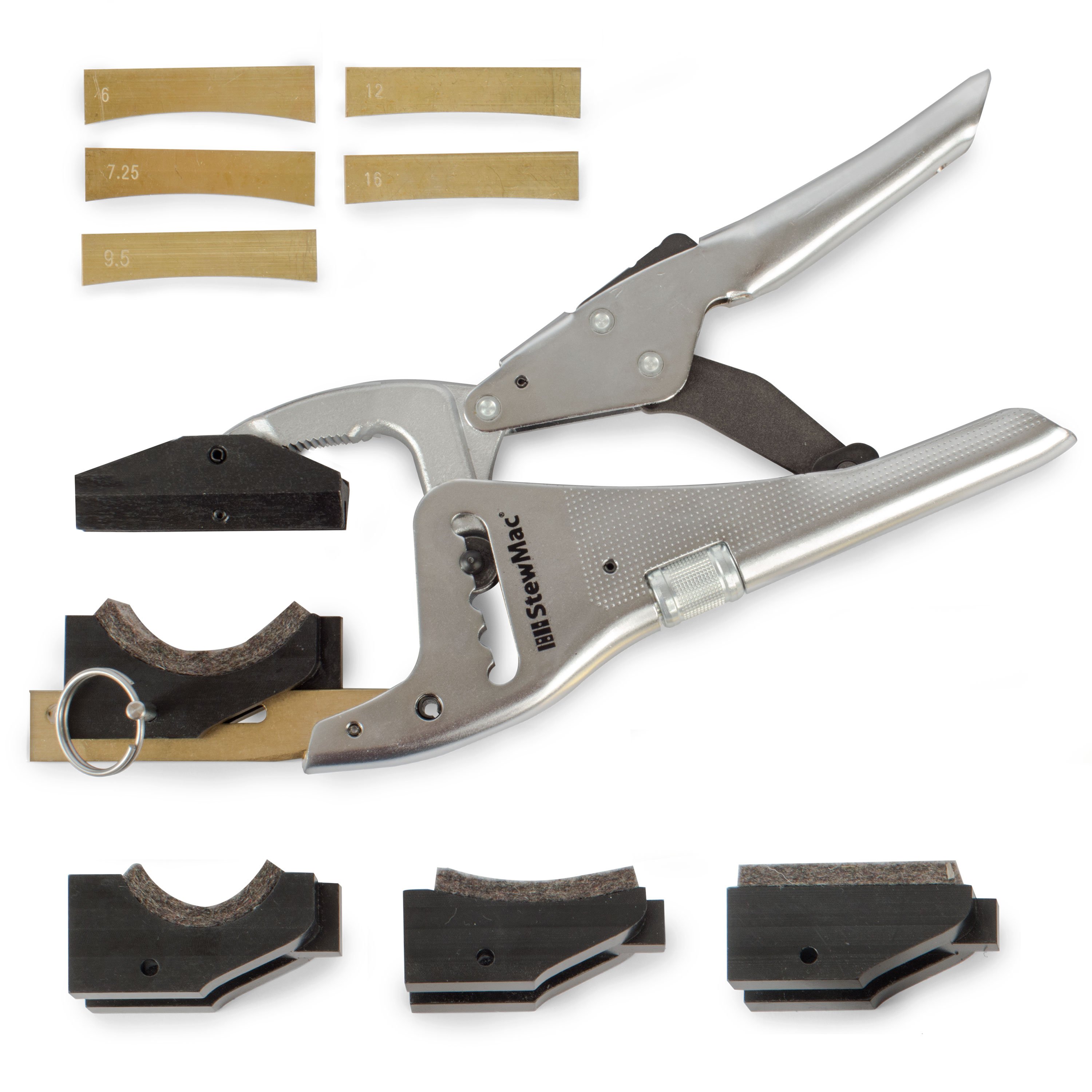Jaws Fret Press Instructions
Overview and instructions for using the Jaws Fret Press.
Read these instructions before starting. This is a two-handed operation, and it's easier to read this now than it will be when you're using the tool! Jaws has the strength to press a fret down into the fingerboard surface, so don't overtighten! The idea is to gently squeeze the fret in without clamping it. (See below for separate instructions on using Jaws as a clamp.) Get a feel for the tool by gripping and releasing a board, or the edge of your benchtop. The action is two-handed: one hand turns the thumbwheel while the other hand is opening and closing the tool. If you've never fretted an instrument, you'll need to know the traditional hammer method before using a professional tool like Jaws. Hammering is still needed for installing frets on the fingerboard over the body. Choose a brass fret caul that matches the fingerboard curve. To start, try the top hinge position (the most commonly used setting). Place the neck caul under the neck, and position the tool so the fret caul will come down next to the fret, not on top of the fret. Slowly squeeze the tool closed while also turning the thumbwheel. With the tool fully closed, the fret caul should almost touch the fingerboard, but not quite. Use a very light touch, so that you don't make caul marks on the fingerboard. Placing a business card on the fingerboard is helpful at first: this prevents caul marks, and the thickness of the card sets the proper gap between the caul and the fingerboard. With the jaws loosely closed over the fingerboard, you're in the correct range for clamping. Open Jaws enough to move the caul onto the fret. Adjust the thumbwheel to get a loose fit so the tool won't lock as you press the fret in. Squeeze the fret into the slot gradually, relaxing your grip momentarily to adjust the jaw opening with the thumbwheel. You will feel the fret ease into the slot and become seated. Stop clamping as soon as the fret is seated. There's no need to close the tool until it locks — you'll have the best feel for seating a fret by relying on hand pressure only. If you choose to use glue under a fret, Jaws will clamp the fret while the glue dries. Adjust the tool so that it barely touches the fret when closed and locked. Now open up and use the thumbwheel to close the jaws down just a little bit, then clamp the fret. This requires very little pressure: just enough to hold the fret down without coming loose. Too much pressure would clamp the fret deeper than intended. A slight bevel on the fret slot edges helps the fret tang into the slot. One pass with a fine file will do it. Press the fret with your fingertip, and it will stand upright in the beveled slot.
First, practice on scrap
Step 1: Clamp loosely
Step 2: Move onto the fret

Step 3: Press the fret in
Using Jaws as a clamp
Tip: Slightly bevel the fret slot

